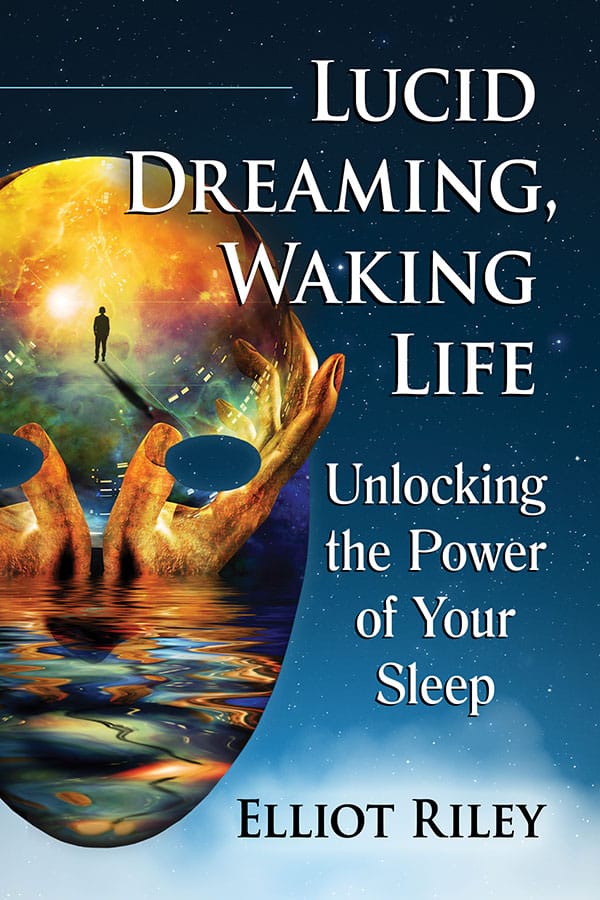Lucid dreaming is a fascinating phenomenon that allows individuals to become aware and conscious within their dreams, providing them with the ability to take control and shape the dreamscapes according to their desires and intentions. In this article, we will explore the science behind lucid dreaming, the techniques to induce and cultivate lucidity, the benefits it offers, and how to overcome challenges. So, let’s delve into the world of lucid dreaming and unlock its immense potential.
Understanding Lucid Dreaming
Definition of Lucid Dreaming: Lucid dreaming refers to a state in which the dreamer is fully aware that they are dreaming while being immersed in the dream world. This heightened state of consciousness allows individuals to actively participate in their dreams, shaping and controlling the narrative as if they are living in a vivid and surreal reality.
The Science Behind Lucid Dreaming: Lucid dreaming is closely connected to the stages of sleep, particularly REM (Rapid Eye Movement) sleep. REM sleep is when most vivid dreaming occurs, and it is during this phase that lucid dreams are most likely to happen. The link between lucid dreaming and consciousness is still being explored, but some studies suggest that the prefrontal cortex, responsible for self-awareness and decision-making, plays a crucial role in enabling lucid experiences.
Benefits of Lucid Dreaming: Lucid dreaming offers numerous psychological and emotional benefits. It can be a powerful tool for emotional healing, stress reduction, and self-discovery. By confronting fears and nightmares in a controlled environment, lucid dreamers can gain a sense of empowerment and overcome phobias. Additionally, it can enhance creativity, problem-solving skills, and even aid in improving performance in real-life activities.
Techniques for Inducing Lucid Dreams
Reality Checks and Dream Journaling: Reality checks involve questioning your state of reality multiple times throughout the day. By establishing this habit, you are more likely to question your reality while dreaming, leading to lucid moments. Maintaining a dream journal helps in increasing dream recall, making it easier to identify recurring dream signs and themes, which are indicators of being in a dream state.
Mnemonic Induction of Lucid Dreams (MILD): MILD is a popular technique developed by Dr. Stephen LaBerge. It involves setting an intention to remember that you are dreaming as you fall asleep. Repeating affirmations like “I will realize I’m dreaming” increases the likelihood of becoming lucid in a dream.
Wake-Back-to-Bed (WBTB) Technique: The WBTB technique involves waking up from sleep after 4-6 hours and staying awake for a short period before returning to bed. During this time, engaging in lucid dreaming exercises or simply reading about lucid dreaming can heighten your chances of having a lucid dream.
WILD (Wake-Induced Lucid Dreaming): WILD is a more advanced technique that involves transitioning directly from a waking state into a lucid dream. This is done by maintaining awareness while the body falls asleep, often accompanied by hypnagogic hallucinations.
Cultivating Lucidity in Dreams
Recognizing Dream Signs: Dream signs are recurring elements or situations in dreams that can act as triggers for lucidity. By analyzing your dream journal and identifying these patterns, you can increase your chances of realizing when you are dreaming and, consequently, become lucid more frequently.
Visualizations and Affirmations: Visualization exercises can help improve the clarity and stability of your lucid dreams. Practicing visualizations during waking hours can lead to more vivid and controllable dreamscapes. Similarly, incorporating positive affirmations about lucid dreaming can reinforce your intention to become lucid in your dreams.
Meditation for Lucidity: Mindfulness practices and meditation can aid in increasing self-awareness, making it easier to recognize when you are dreaming. Regular meditation can also enhance dream recall, leading to more lucid dreams over time.
Advanced Lucid Dreaming Techniques
Dream Control and Manipulation: Once lucid, dreamers can actively shape and control the dream environment. This includes flying, exploring fantastical landscapes, and even changing the dream’s storyline. The possibilities are limited only by the dreamer’s imagination.
Meeting Your Dream Guide: Dream guides are characters that appear in dreams and can provide valuable insights or guidance. Initiating communication with them can lead to profound personal growth and self-discovery.
Exploring the Subconscious: Lucid Dreaming as Therapy: Lucid dreaming can be a therapeutic tool for exploring and healing emotional trauma. Engaging with dreams and their symbols can lead to a deeper understanding of one’s psyche and promote healing on a subconscious level.
Overcoming Challenges in Lucid Dreaming
Staying Calm and Avoiding Premature Awakenings: Excitement in a lucid dream can lead to premature awakenings. To prolong the experience, it’s essential to remain calm and focused.
Dealing with Nightmares and Sleep Paralysis: While lucid dreaming can empower dreamers, it’s crucial to have techniques in place to cope with challenging or frightening dream scenarios. Understanding that you have control can alleviate fear and turn nightmares into empowering experiences.
The Fading Lucidity Issue and Prolonging Dreams: Some lucid dreams may be short-lived due to the dreamer’s lack of experience. With practice, lucid dreamers can learn to stabilize their dreams and extend the lucid experience.
Ethical Considerations in Lucid Dreaming
The Responsibility of Lucid Dreamers: While lucid dreaming is a personal journey, it’s essential to approach dream characters and environments with respect and empathy. Treating dream entities as sentient beings fosters a more enriching experience.
Boundaries and Respect for Dream Characters: Lucid dreamers should be mindful of manipulating the dream world in a way that infringes upon the autonomy of dream characters. Respecting the dream environment ensures a more ethical and rewarding practice.
Conclusion
Lucid dreaming offers a profound avenue for personal growth, self-discovery, and creative exploration. By understanding the science behind lucid dreaming and employing various induction and control techniques, individuals can unlock the immense potential of their dreamscapes. As you embark on this exciting journey of lucid dreaming, remember that practice and patience are key to mastering this empowering skill. Embrace the dream world, take charge of your dreams, and let your imagination soar beyond the boundaries of reality.
Frequently Asked Questions (FAQs)
1. What if I can’t remember my dreams?
If you struggle with dream recall, keeping a dream journal can significantly improve your ability to remember dreams. Write down any fragment or detail you can recall upon waking up, even if it seems insignificant. Over time, your dream recall will improve, making it easier to identify dream signs and achieve lucidity.
2. Can lucid dreaming lead to sleep disturbances?
Lucid dreaming is generally safe and does not cause sleep disturbances. However, engaging in lucid dreaming practices right before bedtime may lead to heightened mental activity, making it challenging to fall asleep. Implement lucid dreaming techniques during the WBTB approach to minimize any potential sleep disruptions.
3. Are there any risks associated with lucid dreaming?
Lucid dreaming is a natural phenomenon and is not associated with any significant risks. However, some individuals may experience sleep paralysis during the transition between sleep and wakefulness while attempting lucid dreaming techniques. Sleep paralysis is a normal bodily function and not harmful; understanding this can help manage any fear associated with the experience.
4. How long does it take to master lucid dreaming?
The time it takes to master lucid dreaming varies from person to person. Some individuals may achieve lucidity within a few weeks of practice, while others may take several months. Consistent practice, combined with a positive mindset and dedication, will increase your chances of becoming proficient in lucid dreaming.
5. Can children learn to have lucid dreams?
Yes, children can learn to have lucid dreams. However, it’s essential to provide appropriate guidance and support to ensure that children understand the difference between dreams and reality. Encourage open communication with your child about their dreams and their experiences with lucid dreaming.


Greetings and welcome to my corner of the digital realm! I’m Ethan Harrington, a dedicated and passionate professional in the field of therapy psychology. My journey through the intricate landscapes of the human mind, emotions, and dreams has led me to this point, where I’m excited to share my insights, knowledge, and experiences with you. See this

